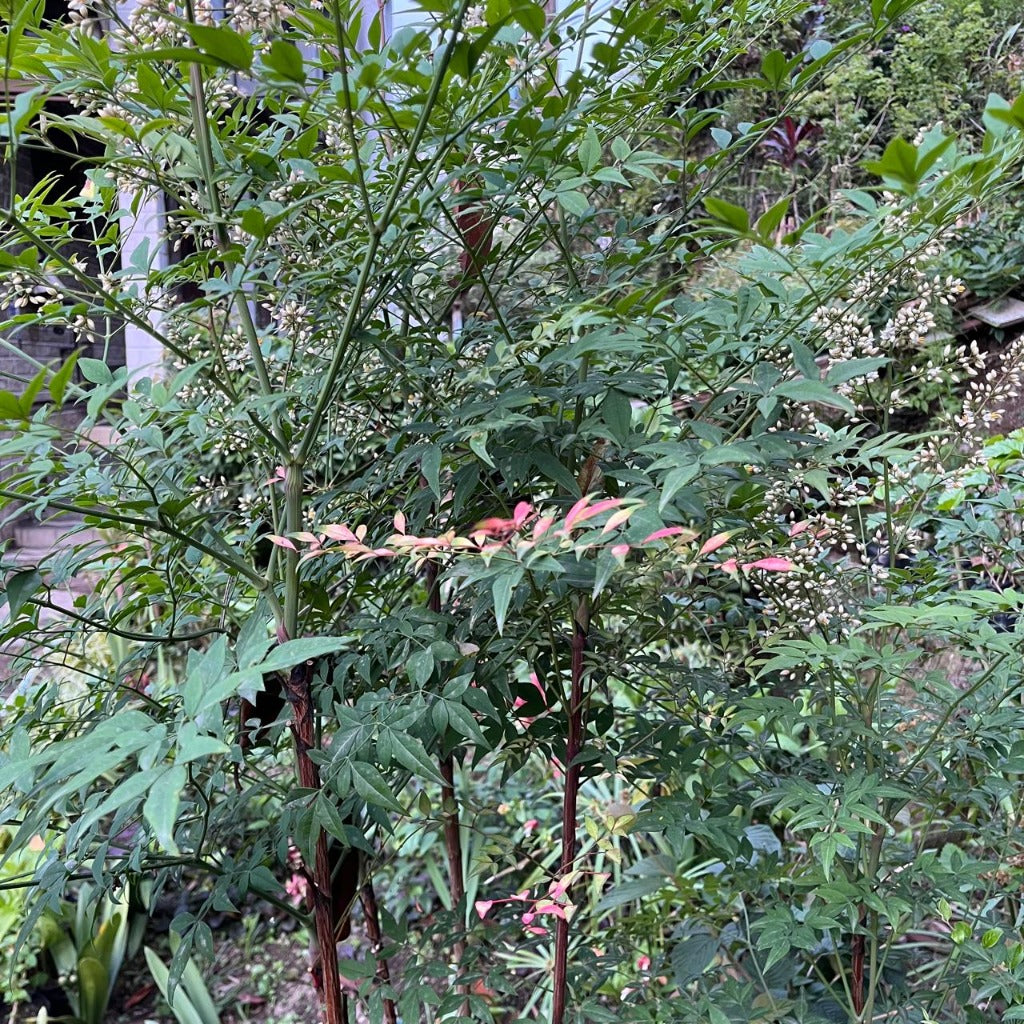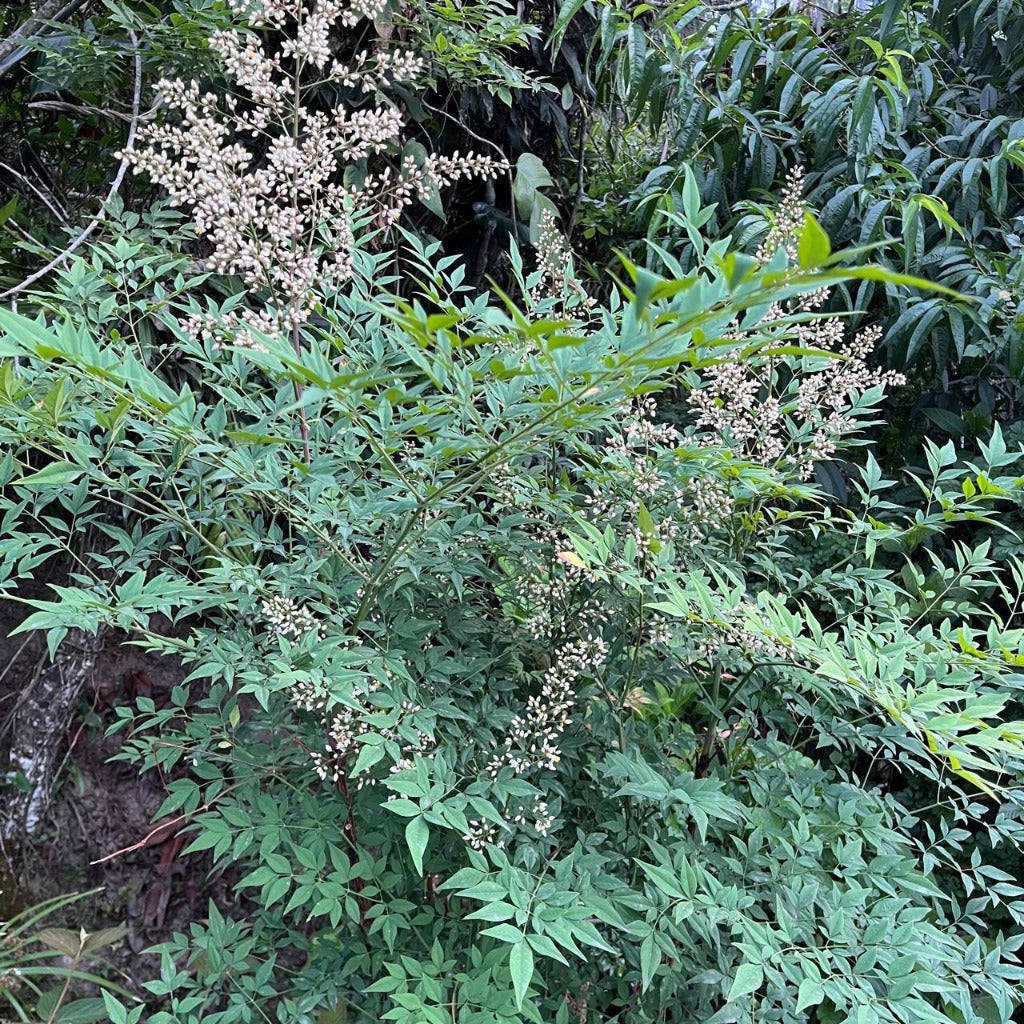Sacred bamboo
Origin
Asia
Family
Berberidaceae
Description
Despite the common name "sacred bamboo", Nandina domestica is not a bamboo but an erect evergreen shrub up to 2m (7ft) tall by 1.5 m (5ft) wide, with numerous, usually unbranched stems growing from ground level. The glossy leaves are sometimes deciduous in colder areas, 50–100 cm (20–39 in) long, bi- or tri-pinnately compound, with the individual leaflets 4–11 cm (2–4 in) long and 1.5–3 cm broad.
The young leaves in spring are brightly coloured pink to red before turning green; old leaves turn red or purple again before falling. Its petiolate leaves are 50–100 cm long, compound (two or three pinnacles) with leaflets, elliptical to ovate lanceolate and of entire margins, 2–10 cm long by 0.5–2 cm wide, with petioles swollen at their bases.
The inflorescences & are axillary or terminally erect panicles with numerous hermaphrodite flowers. There are several ovate-oblong sepals of a pinkish white color, and six oblong white petals, each 4 by 2.5 mm. The flowers are borne in early summer in conical clusters held well above the foliage.
Environment
Sacred Bamboo is easily grown in rich, moist, well-drained soils in filtered sun/part shade to shade. Avoid direct sun. Best growth occurs in moist shady locations. Plants adapt very well to the limited light and controlled temperatures which are often present in indoor locations. Protect indoor plants from full sun and dry air.
Use a moist, well-drained soil (preferably acidic soil), and water the plants as soon as the soil feels dry a little below the surface.
Mist the leaves several times a week with a spray bottle. Mist the plant more frequently in the summer growing season. the more water you can supply the blooms, the healthier it will be.
Fertilize palm plants with a time-release fertilizer in spring. This gives the plant most of the nutrients it needs for the entire season. The fronds benefit from a micronutrient spray in summer. Leaf color is one of the best guide ,Rich green indicates fertilizer levels are adequate & slight overall yellowish color may mean the to apply nutrients
Landscape
Fast growing palm suitable for use as a privacy or screening plant.























